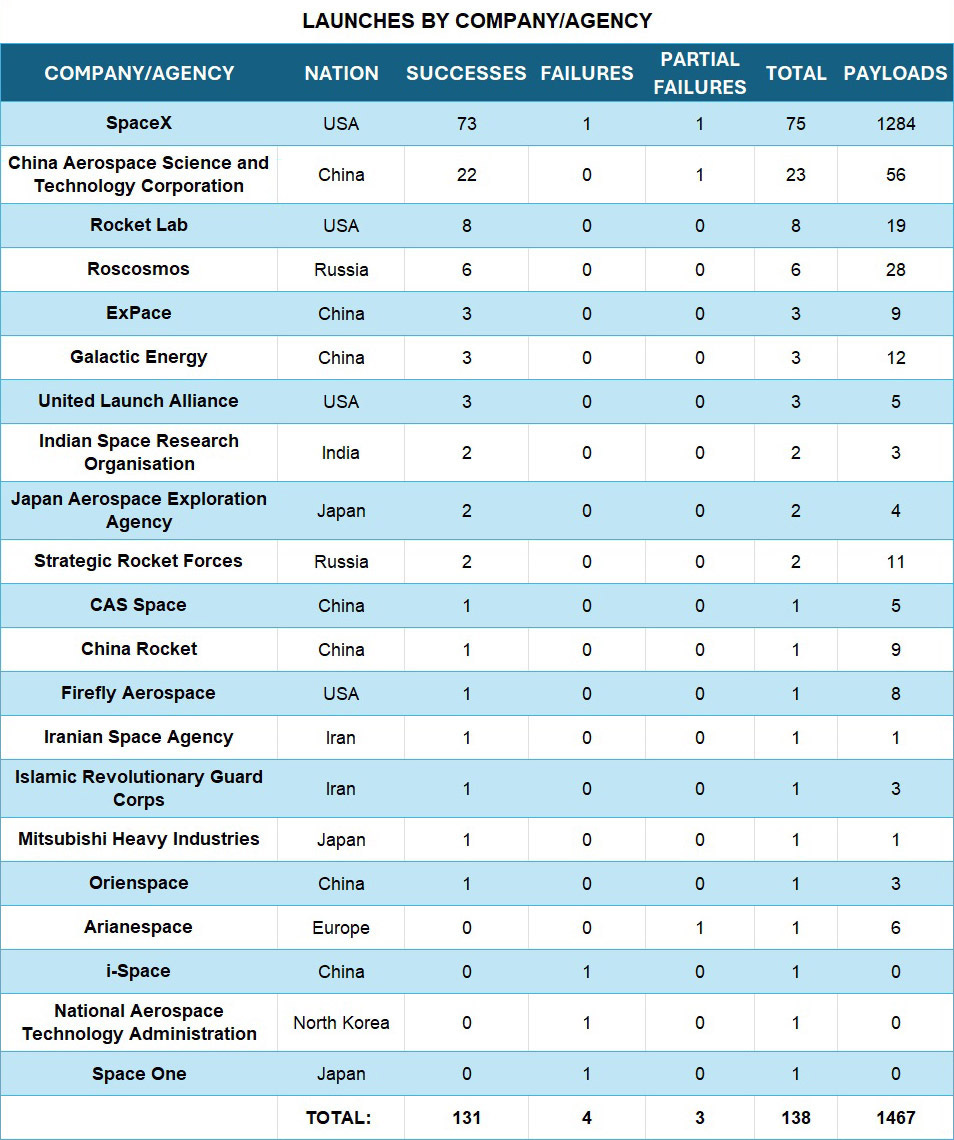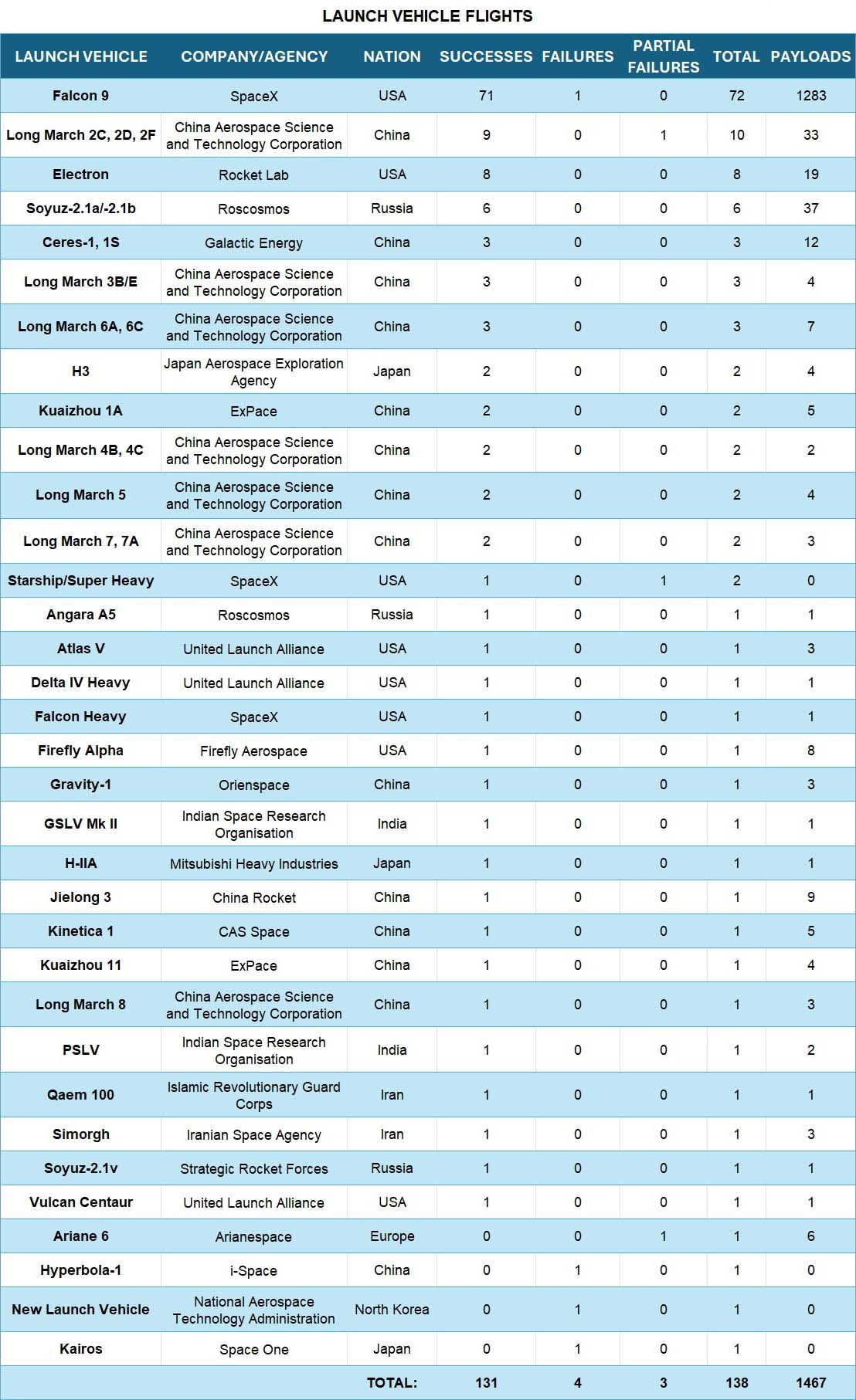Falcon 9 Returns to Flight as China Prepares to Launch Starlink Competitor

SpaceX’s grounded Falcon 9 returned to flight over the weekend with three launches of 67 Starlink broadband satellites as China prepared to launch the first batch of its competing G60 constellation.
SpaceX reeled off two Falcon 9 launches from Florida and one from Vandenberg Space Force Base in California in less than 28 hours on Saturday and Sunday. They were the first launches of the booster since a second stage liquid oxygen leak led to the loss of 20 Starlink satellites on July 11. It was the first failure in nearly 300 Falcon launches.
Recent Launches
July 19 – Long March 4B – China Aerospace Science and Technology Corp. – Gaofen-11 05 – China National Space Administration – Earth observation – Taiyuan – China
July 27 – Falcon 9 – SpaceX – 23 Starlink – SpaceX – Communications – Kennedy – USA
July 28 – Falcon 9 – SpaceX – 23 Starlink – SpaceX – Communications – Cape Canaveral – USA
July 27 – Falcon 9 – SpaceX – 21 Starlink – SpaceX – Communications – Vandenberg – USA
SpaceX has launched 1,155 Starlink satellites on 51 successful Falcon flights this year. The company has launched 6,785 Starlink spacecraft since February 2018. Not all of the satellites remain in orbit.
Meanwhile, Shanghai Spacecom Satellite Technology is preparing for the launch of the first 18 satellites in its G60 broadband constellation, which will eventually include more than 12,000 spacecraft. A Long March 6A rocket is scheduled to launch the satellites from the Taiyuan spaceport on Aug. 5.
United Launch Alliance’s (ULA) Atlas V rocket is set to make its final national security launch on Tuesday, July 30. The booster will launch the USA-396 mission for the U.S. Space Force. ULA’s new Vulcan Centaur rocket will carry national defense payloads in the future.
Upcoming Launches
July 30 (6:45 a.m. EDT/10:45 a.m. UTC) – Atlas V – United Launch Alliance – USA-396 – U.S. Space Force – Reconnaissance – Cape Canaveral – USA
Final Atlas V national security launch
July 30 (12:15 p.m. EDT/16:15 UTC) – Electron – Rocket Lab – StriX-2 – Synspective – Earth observation – Mahia – New Zealand
Aug. 2 (12:19 a.m. EDT/04:19 UTC) – Falcon 9 – SpaceX – Starlink – SpaceX – Communications – Kennedy – USA
Aug. 3 (11:28 a.m. EDT/15:28 UTC) – Falcon 9 – SpaceX – Cygnus NG-21 – Northrop Grumman – ISS resupply – Cape Canaveral – USA
Aug. 5 – Long March 6A – China Aerospace Science and Technology Corp. – 18 G60 – Shanghai Spacecom Satellite Technology – Communications – Taiyuan – China
First batch of ~12,000 satellite G60 broadband constellation
Aug. 7 – SSLV – ISRO – Satish Dhawan – India
EOS-08 – ISRO – Technology demonstration
Space Rickshaw-0 – Space Rickshaw – Function TBA
IITMSAT – IIT Madras – Ionospheric research
SpaceX is scheduled the launch the Cygnus NG-21 resupply vehicle to the International Space Station (ISS) on Aug. 3. It will be the second of three Cygnus launches on Falcon 9 while Northrop Grumman develops a new version of the Antares rocket.
Rocket Lab is scheduled to launch its nine Electron booster this year from New Zealand on July 30. India will launch three satellites aboard its Small Satellite Launch Vehicle on Aug. 7.
Launch Statistics
July will have the lowest number of launches this year due to the grounding of SpaceX’s Falcon 9. The world is now on a course for 240 launches this year, an increase over the 223 attempts conducted in 2023. That figure could rise as SpaceX works through its backlog of launches.
The United States leads the world with 87 launches, including 85 successes, one failure and one partial failure. A total of 1,316 payloads have been successfully placed in space.
China is in second place with 33 launch attempts and 94 payloads sent into Earth orbit and beyond.
SpaceX leads the world with 75 launches. The company is aiming to launch 144 times this year, but is currently on a pace for around 128 flights. SpaceX’s launch cadence is likely to accelerate now that Falcon 9 has returned to flight.
The China Aerospace Science and Technology Corp. has launches 23 times. Rocket Lab has launched eight times, which puts the company equal with Russia’s entire launch output for the year.
Falcon 9 has launched 72 times with a single failure. SpaceX’s Starship/Super Heavy booster has launches twice and the Falcon Heavy rocket once.
China’s Long March 2 booster family has launched 10 times with nine successes and one partial failure.
Fifty-two launches have been conducted from Florida’s two orbital spaceports. Vandenberg in California has hosted 25 launches, Starbase in Texas has hosted two flights, and one launch has been conducted from the Mid-Atlantic Regional Spaceport in Virginia.
The Jiuquan Satellite Launch Center leads all Chinese spaceports with 11 launches followed by the Xichang spaceport with nine flights. Rocket Lab’s Mahia spaceport is in sixth place overall with seven launches with an eighth scheduled for July 30.









